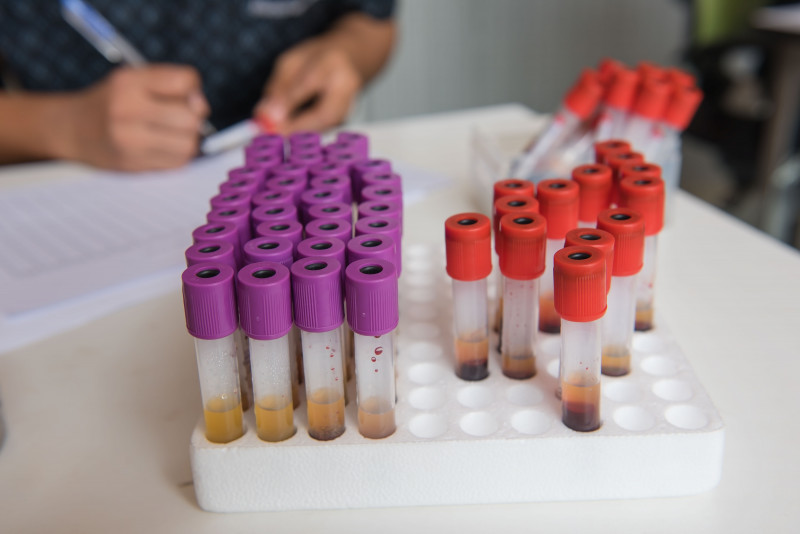Micro RNA Molecule miR-146a May Be Useful Diagnostic Marker
Written by |

A micro RNA molecule called miR-146a was found at high levels in the blood of patients with myasthenia gravis (MG), and this is thought to contribute to disease development, a single-site study suggests.
The findings put forward miR-146a as “a suitable candidate marker for diagnosing MG,” the researchers wrote.
The study, “Expression and Clinical Significance of miR-146a and Tumor Necrosis Factor Receptor-Associated Factor 6 (TRAF6) in Myasthenia Gravis Patient Serum,” was published in the journal BioMed Research International.
Micro RNAs, known as miRNAs, are tiny RNA molecules that regulate the activity of certain genes. They do this by interacting with specific messenger RNAs (mRNAs) and changing their size, stability, or ability to carry the instructions needed to make proteins.
One particular micro RNA, known as miR-146a, acts as a key modulator of biological processes, including the immune response, which may explain why it is “abnormally expressed in a range of diseases,” the researchers wrote. It also is linked to disease severity, they noted.
In MG, miR-146a is known to be abundant in peripheral blood mononuclear cells, which include all peripheral blood cells that have a round nucleus — the compartment that holds a cell’s genetic information.
To learn more, researchers began by collecting peripheral blood from 52 people with MG and 60 healthy individuals, who served as controls. The MG patients had a mean age of 33.2 years, while the mean age of the healthy controls was 34.0 years.
Serum, the clear liquid portion of blood, was then obtained. To detect and quantify the presence of miR-146a, the researchers used a technique called quantitative real-time polymerase chain reaction or qRT-PCR.
When the investigators compared serum samples from the two groups, they found miR-146a levels were much higher in MG patients than in the healthy controls.
The team also measured the levels of TRAF6, one of the target mRNAs of miR-146a. TRAF6 stands for tumor necrosis factor receptor-associated factor 6; the protein encoded by the TRAF6 gene is an “accessory” protein that assists with the protein–protein interactions needed to control the body’s immune responses.
Serum levels of TRAF6 mRNA also were found to be higher in MG patients than in healthy controls.
In patients with MG, but not in healthy controls, miR-146a was positively correlated with TRAF6 mRNA levels. In other words, the higher the levels of miR-146a, the higher also were the levels of TRAF6 mRNA.
Based on these observations, the scientists suggested that “miR-146a might promote TRAF6 mRNA expression [activity] … thus leading to MG occurrence.”
A diagnosis of MG may be missed, the investigators noted, as some patients may have negative blood test results for any of the typical disease-causing self-reactive antibodies.
“Therefore, it is of great clinical importance to find new appropriate biomarkers for the diagnosis of MG,” the researchers wrote.
The team knew that miR-146a might be linked to disease severity and that it might “be helpful in diagnosing MG and predicting progression.”
Therefore, they searched for a link between the levels of miR-146a or TRAF6 mRNA and the occurrence of MG. Their findings showed that higher levels of miR-146a or TRAF6 mRNA were linked to an increased risk for MG.
Even after adjusting data to take into account several clinical parameters — for example, a patient’s level of muscle weakness — higher levels of miR-146a were still linked to a twofold higher risk for MG. Higher levels of TRAF6 mRNA were associated with a 1.5 times higher risk.
Using a method of statistical analysis to explore the diagnostic utility of serum miR-146a and TRAF6 mRNA, the researchers found that both could be used to diagnose MG with a sensitivity and specificity greater than 60%. Of note, sensitivity refers to a test’s ability to correctly identify true positives, while specificity refers to its ability to detect true negatives.
“Our results suggest that the detection of serum miR-146a and TRAF6 mRNA levels … can diagnose MG early, and timely treatment measures can be performed,” the researchers concluded.
They also noted these findings provide the basis for “a subsequent in-depth study on the role of miR-146a and TRAF6 mRNA in MG occurrence and development.”






Leave a comment
Fill in the required fields to post. Your email address will not be published.